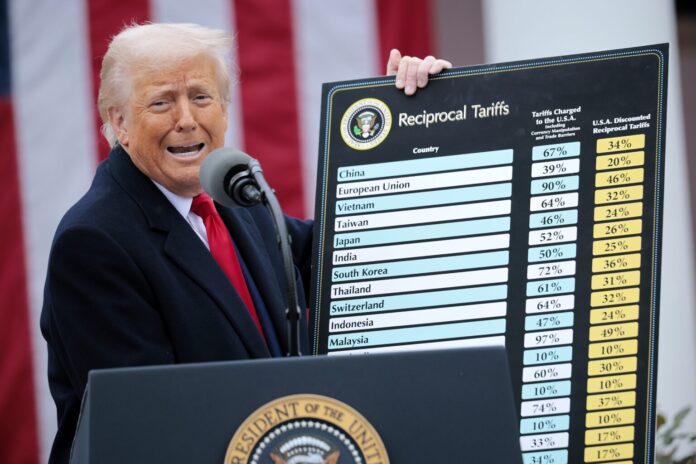Olu Sonola, head of U.S. economic research at Fitch Ratings, said the average tariff rate charged by the United States would increase to roughly 22% from 2.5% in 2024.
“Many countries will likely end up in a recession,” Sonola said. “You can throw most forecasts out the door, if this tariff rate stays on for an extended period of time.”
The new tariffs will come on top of recent announcements of 25% taxes on auto imports; levies against China, Canada and Mexico; and expanded trade penalties on steel and aluminum. Trump has also imposed tariffs on countries that import oil from Venezuela and he plans separate import taxes on pharmaceutical drugs, lumber, copper and computer chips.
Canada and Mexico would not face higher rates on what they’re already being charged by Trump in what he says is an effort to stop illegal immigration and drug smuggling. As of now, goods that comply with the USMCA North American trade pact would be excluded from those tariffs.
But the 20% charged on imports from China due to its role in fentanyl production would largely be added to the 34% announced by Trump. The specific products that Trump is tariffing, such as autos, would be exempt from the tariffs unveiled Wednesday, as would products such as pharmaceutical drugs that he plans to tariff at a later date.
Threats of backlash
None of the warning signs about a falling stock market or consumer sentiment turning morose have caused the administration to publicly second-guess its strategy, despite the risk of political backlash.
Senior administration officials, who insisted on anonymity to preview the new tariffs with reporters ahead of Trump’s speech, said the taxes would raise hundreds of billions of dollars annually in revenues.

